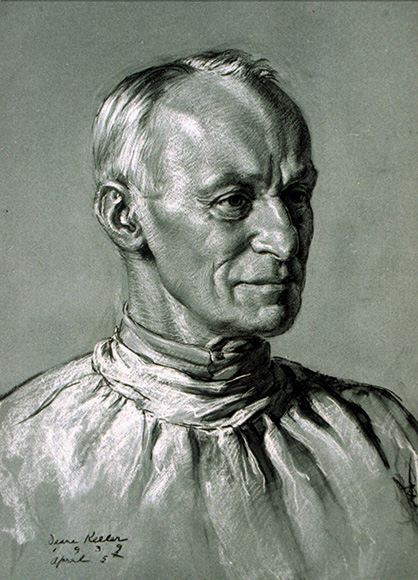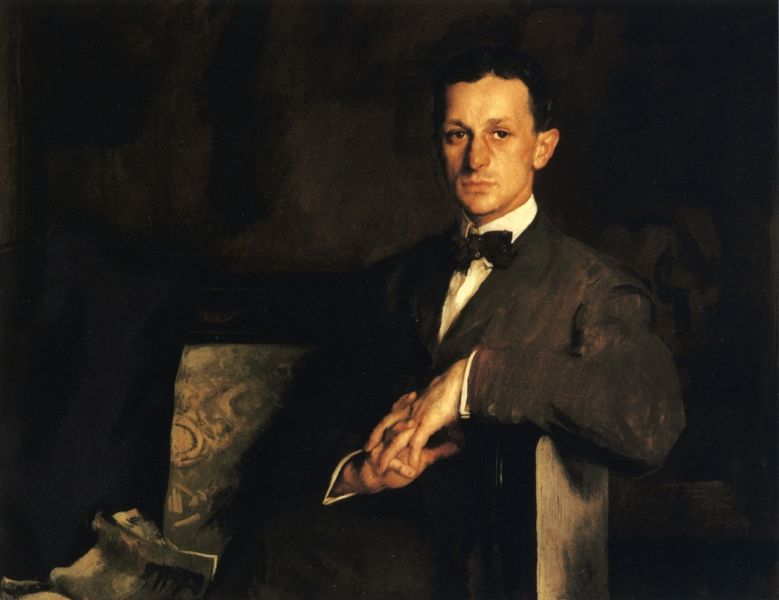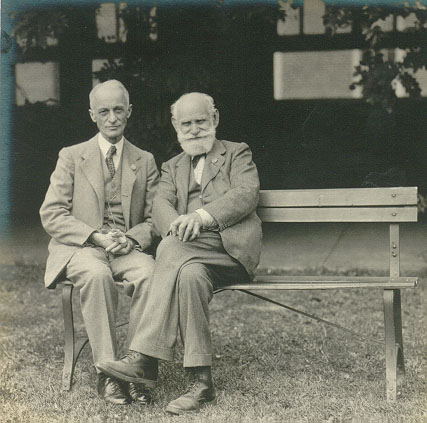<Back to Index>
- Neurosurgeon Harvey Williams Cushing, 1869
- Photographer Clarence Hudson White, 1871
- King of Spain Philip IV, 1605
PAGE SPONSOR

Harvey Williams Cushing, M.D. (April 8, 1869 - October 7, 1939), was an American neurosurgeon and a pioneer of brain surgery, and the first to describe Cushing's syndrome. He is widely regarded as the greatest neurosurgeon of the 20th century and often called the "father of modern neurosurgery".
Cushing was born in Cleveland, Ohio, the son of Bessie Williams; and Kirke Cushing, a physician whose family came to Hingham, Massachusetts, as Puritans in the 17th century. Harvey Cushing was the youngest of ten children. He graduated with an A.B. degree in 1891 from Yale University, where he was a member of Scroll and Key and Delta Kappa Epsilon (Phi chapter). He studied medicine at Harvard Medical School and was given his M.D. degree in 1895. Cushing completed his internship at Massachusetts General Hospital and then did a residency in surgery under the guidance of a famous surgeon, William Stewart Halsted, at the Johns Hopkins Hospital, in Baltimore. During his medical career he was a surgeon at Johns Hopkins Hospital, at the Peter Bent Brigham Hospital in Boston.
He married Katharine Stone Crowell on June 10, 1902. They had five children: William Harvey Cushing; Mary Benedict Cushing who married Vincent Astor and after a divorce married painter James Whitney Fosburgh; Betsey Cushing, who married James Roosevelt and later John Hay Whitney; Henry Kirke Cushing; and Barbara Cushing, the socialite wife of Stanley Grafton Mortimer and later William S. Paley.
He became a professor of surgery at the Harvard Medical School starting in 1912. He served in the U.S. Army Medical Corps as a surgeon with the American Expeditionary Forces in Europe during World War I, attaining the rank of Colonel. In that capacity, he treated Lt. Edward Revere Osler, the son of Sir William Osler, who was fatally wounded during the third battle of Ypres. From 1933 to 1937, when he retired, he worked at Yale University School of Medicine.
Cushing died on October 7, 1939 in New Haven, Connecticut, from complications of a myocardial infarction. He was interred at Lake View Cemetery in Cleveland. Interestingly, an autopsy performed on Cushing revealed that his brain harbored a colloid cyst of the third ventricle.
In
the
beginning
of the 20th century he developed many of the basic
surgical techniques for operating on the brain. This established him as
one of the foremost leaders and experts in the field. Under his
influence neurosurgery became a new and autonomous surgical discipline. Arguably,
Cushing's greatest contribution came with his introduction to North
America of blood pressure measurement. On visiting colleague Scipione
Riva-Rocci, an Italian
physician, Cushing was astonished at
Riva-Rocci's non invasive way to measure intra-arterial pressure. In
1896, Riva-Rocci developed a wall-mounted mercury manometer linked to a
balloon-inflated cuff that would measure the pressure needed to
compress arterial systolic pressure, i.e. systolic blood pressure
measurement. Riva-Rocci's design was based on a more primitive version
developed by French physician Pierre
Potain. Cushing brought back
a sample of Riva-Rocci's sphygmomanometer,
and
blood pressure measurement became a vital sign and its use spread
like wildfire across the US and western world as a direct contribution
by Harvey Cushing. Its use remained until Russian physician Nikolai
Korotkov included
diastolic blood pressure measurement in 1920 (after he discovered the
famed "Korotkoff
sounds") with his modern
sphygmomanometer, which also replaced the
mercury manometer with a smaller, round dial manometer. Cushing's
name
is commonly associated with his most famous discovery - Cushing's
disease. In 1912 he reported in a study an endocrinological
syndrome caused by a malfunction of the pituitary
gland which he
termed "polyglandular syndrome". He published his findings in 1932, as
"The Basophil Adenomas of the Pituitary Body and Their Clinical
Manifestations pituitary Basophilism". Cushing
was
also awarded the 1926 Pulitzer
Prize
for Biography or Autobiography for
a
book recounting the
life of one of the fathers of modern medicine, Sir William
Osler. In 1930,
Cushing was
awarded the Lister
Medal for his
contributions to surgical science. As part of the award, he delivered
the Lister Memorial Lecture at the Royal
College
of Surgeons of England in
July
1930. Cushing was elected
to the Royal
Swedish
Academy of Sciences in
1934. In
1988,
the United
States
Postal Service issued
a
45
cent postage
stamp in his
honor,
as part of the Great
Americans
series. The Harvey
Cushing/John
Hay
Whitney Medical Library at Yale
University contains
extensive collections in the field of medicine and the history of
medicine. In 2005, the library released portions of its collection
online, including the Peter
Parker Collection
which consists of a collection of portrait engravings and 83 mid-19th
century oil paintings rendered by artist Lam
Qua of Chinese
tumor patients, and a biography of Harvey Cushing by John F. Fulton.

